The Future of Procurement: 8 Trends to Watch Out For


The future of procurement holds immense potential for transforming business operations and driving competitive advantage.
But with technology rapidly evolving, market conditions shifting, and consumer demands constantly changing, keeping up can feel like a never-ending race.
If you’re feeling overwhelmed by the sheer pace of change, or you’re simply curious about what the future holds for procurement, this article is for you.
We’re here to demystify the landscape and highlight eight key trends that are shaping the future of procurement.
By understanding these emerging trends, you can proactively adapt your strategies, gain a competitive edge, and ensure your organization’s long-term success.
So, buckle up and get ready to explore the exciting possibilities that await.
Efficiency is the name of the game in modern procurement.
Organizations across industries are striving to optimize processes and reduce manual work, and this trend is slowly revolutionizing procurement as well.
By adopting procurement automation tools and processes like electronic procurement systems, robotic process automation (RPA), and automated spend analysis, businesses can significantly streamline their procurement activities.
Let’s look at RPA, which is quickly gaining wide adoption, according to a report by Avasant.
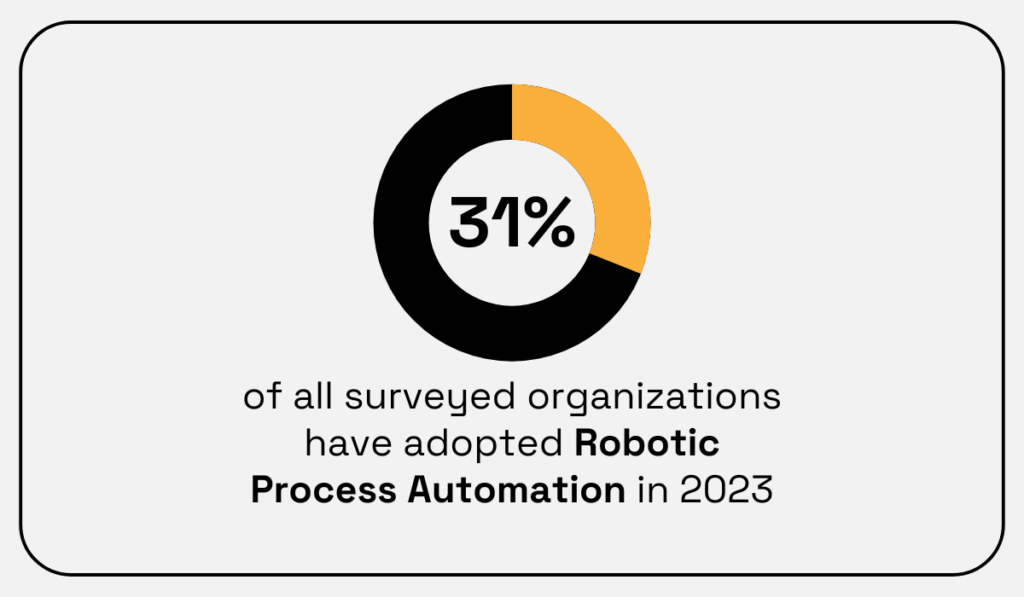
Illustration: Veridion / Data: Avasant
RPA uses software robots to automate repetitive tasks that were previously performed manually.
In procurement, RPA can automate activities such as purchase order creation, invoice processing, and vendor communication, freeing up valuable time for procurement professionals.
Using this and other automation technologies, a lot of different areas of procurement can soon be or are already changing.
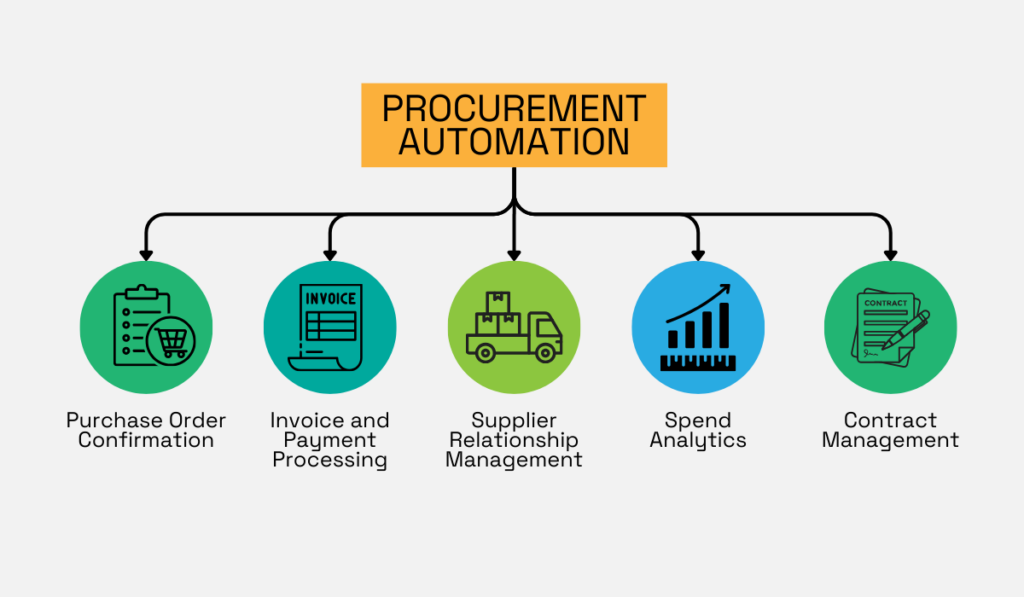
Source: Veridion
Manual and number-crunching admin work, such as payment processing, spend analytics, and even contract management, are being replaced by automation.
This shift not only improves accuracy but also allows procurement teams to focus on more strategic decisions and supplier relationships, rather than getting bogged down by routine administrative tasks.
In short, automation is rapidly transforming procurement, empowering teams to work smarter, faster, and more strategically.
You’ve almost certainly been aware of the AI revolution taking everyone by storm.
Alongside automation, AI is widely invested in across industries, transforming how businesses operate.
This trend is driven by the potential of AI to enhance efficiency, accuracy, and strategic decision-making in various sectors.
As McKinsey research shows, a significant focus is on Applied AI, which has seen a rapid rise in interest between 2018 and 2022.

Source: McKinsey
More than simple task automation, applied AI aids procurement specialists in better prediction and decision-making.
For example, AI-powered predictive analytics can forecast demand more accurately, allowing procurement teams to optimize inventory levels and reduce costs.
It’s also worth keeping an eye on generative AI, which has seen a 44% increase in job postings from 2021 to 2022.
Generative AI, which involves models capable of creating content like text, images, or code, can streamline tasks such as drafting contract templates, generating reports, or even simulating procurement negotiation scenarios.
But we most likely don’t have to convince you about AI.
According to Amazon’s State of Business 2024 Procurement Report, the overwhelming majority of organizations are already planning investments in AI.
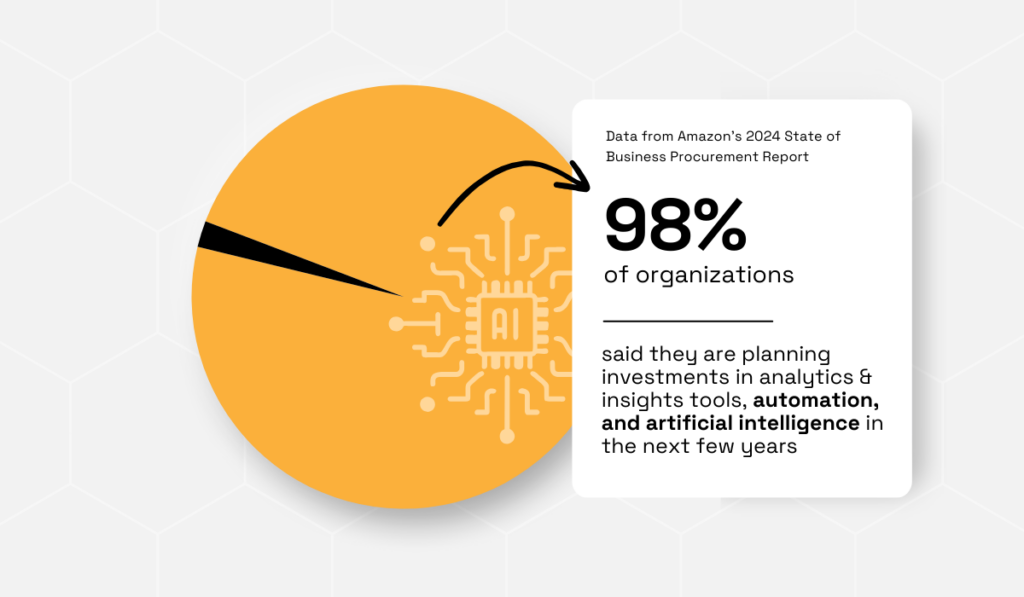
Illustration: Veridion / Data: Amazon Business
And if you’re not, the time is now to hop on this trend and avoid being left behind.
Ultimately, AI integration is not just a fad, but rather a transformative force in procurement.
Embracing AI technologies can significantly enhance predictive capabilities, decision-making, and innovation, ensuring your procurement strategy is future-ready.
As procurement processes become increasingly digital, the risk of cyberattacks looms larger.
Think phishing scams, malware infecting essential software, or even targeted attacks on your supply chain partners.
The consequences of a successful cyberattack can be devastating, leading to financial losses, reputational damage, and even legal repercussions.
For a real-life example, two years ago, the Nichirin automotive group was hit by a ransomware attack that forced them to temporarily halt production.

Source: Cybertalk
While the specifics of the attack remain undisclosed, this ransomware attack could have meant attackers blocked access to files containing crucial supplier data, or even disabled payment systems, causing severe disruptions to Nichirin’s entire supply chain.
But cyberattacks that are even more concerning for procurement professionals are financial supply chain compromise attacks.
These attacks involve manipulating financial transactions and compromising the integrity of the supply chain.
As Crane Hassold, former director of threat intelligence at Abnormal Security, explains, these attacks can be particularly difficult to defend against.
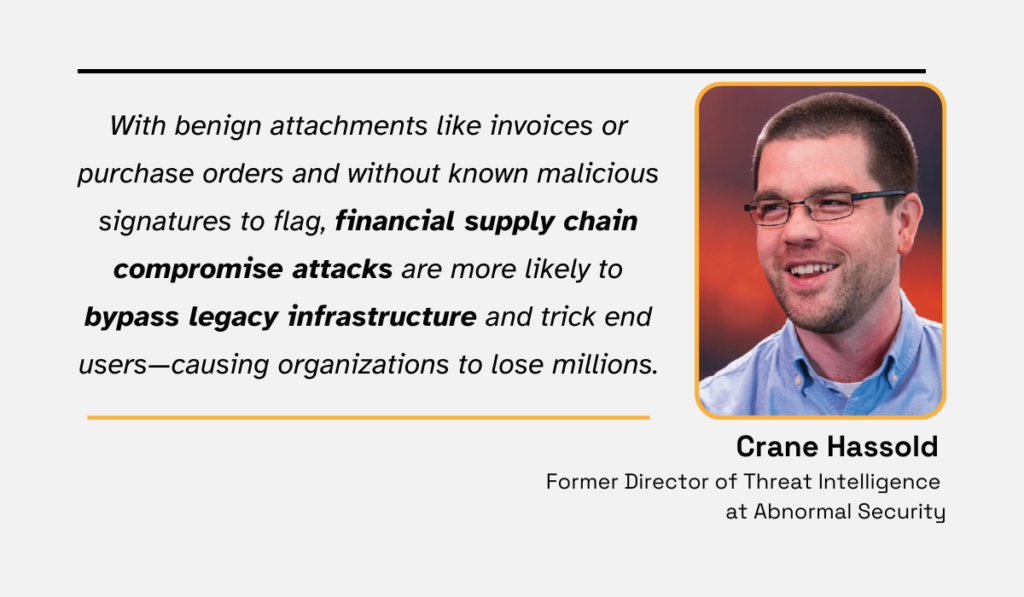
Illustration: Veridion / Quote: Abnormal Security
This difficulty arises because financial supply chain compromise attacks are essentially a subset of business email compromise (BEC) attacks.
They often do not use malicious software, making them hard to detect.
Attackers might impersonate a trusted vendor or executive to trick employees into transferring funds or sharing sensitive information.
Protecting against cyberattacks in procurement, therefore, requires a multi-layered approach.
This includes investing in robust security software, implementing strong password policies, educating employees about threats, and regularly backing up critical data.
This is not an optional trend to follow, as adopting cybersecurity policies is necessary to safeguard procurement operations.
Now, let’s turn to procurement decision-making and how data accuracy and validity are becoming increasingly critical.
Data analytics tools, along with the advanced AI and automation technologies we mentioned earlier, are enabling organizations to gain deeper insights into procurement operations.
These technologies help in analyzing vast amounts of data to uncover trends, predict outcomes, and make more informed decisions.
As UST’s managing director Jonathan Colehower explains, this data-driven decision-making is especially important for organizations with complex supplier networks.
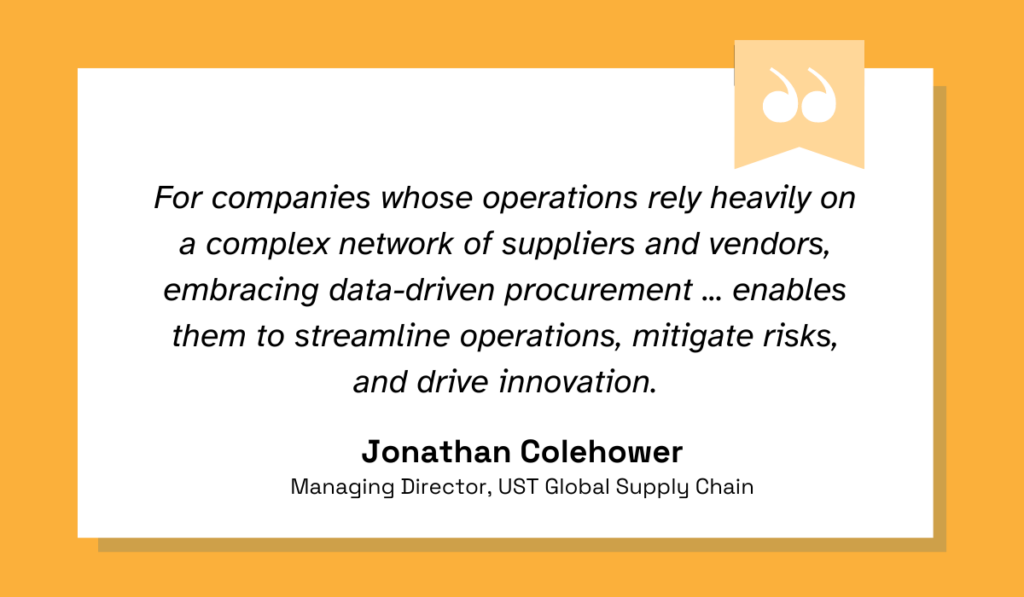
Illustration: Veridion / Data: UST
Data-driven decision-making helps mitigate risks and uncover opportunities for innovation.
For instance, predictive analytics can forecast potential supply chain disruptions, allowing procurement teams to develop contingency plans in advance.
For more specific examples, the next image shows how some data-driven practices help in procurement decision-making, supplier risk management, and efficiency.
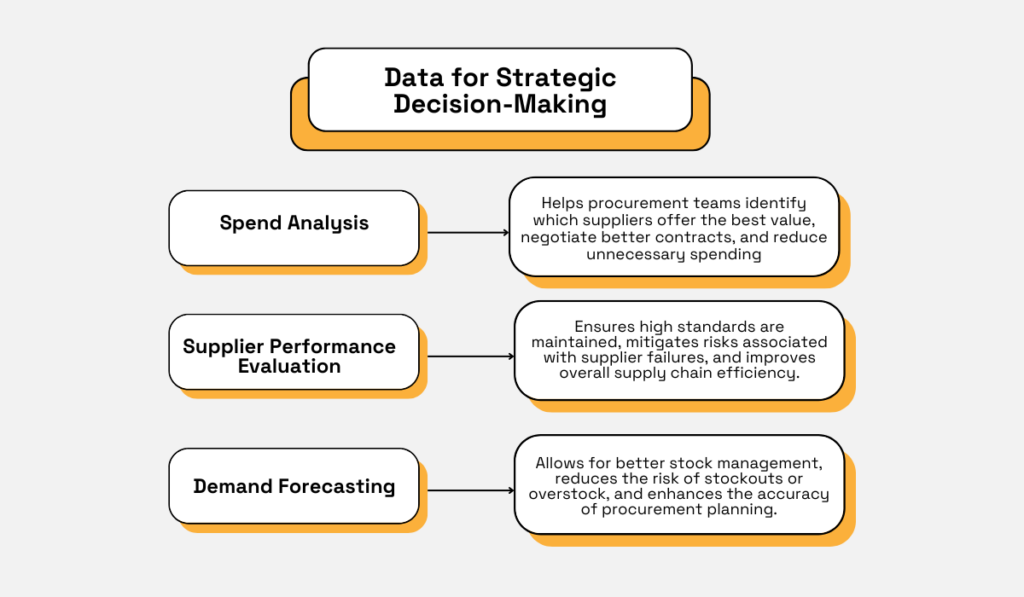
Source: Veridion
Focusing on supplier data is especially important.
To help with this, you might want to use supplier sourcing and risk management tools like Veridion.
Veridion offers a global, weekly updated supplier database that can be easily searched with our complex search API.
Say you’re looking for local sustainable pallet manufacturers.
Then you might conduct a search like the one shown below.
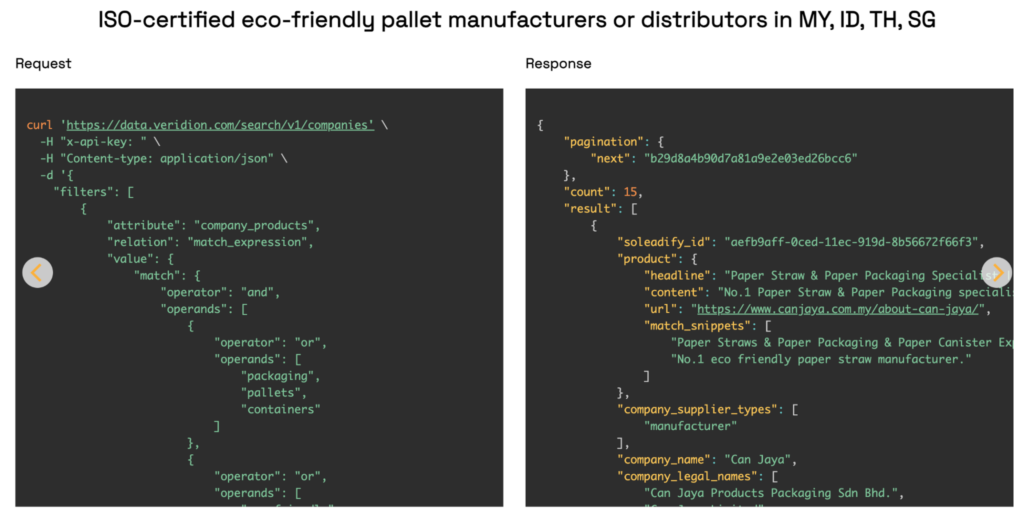
Source: Veridion
Using platforms like Veridion ensures you get accurate, up-to-date information, helping you make better-informed decisions and maintain a competitive edge.
Whichever way you do it, ensuring you are leveraging quality data for strategic decision-making is crucial in modern procurement.
For our fifth trend on this list, let’s see how sustainability is becoming a central focus in procurement practices.
Organizations are increasingly orienting their procurement strategies towards sustainability, integrating environmentally friendly practices and ethical sourcing into their operations.
This shift is driven by a growing recognition of the importance of sustainability for long-term business success and social responsibility.
Research supports this trend, with Ivalua uncovering that the vast majority of UK businesses are focused on sustainability-led innovation.
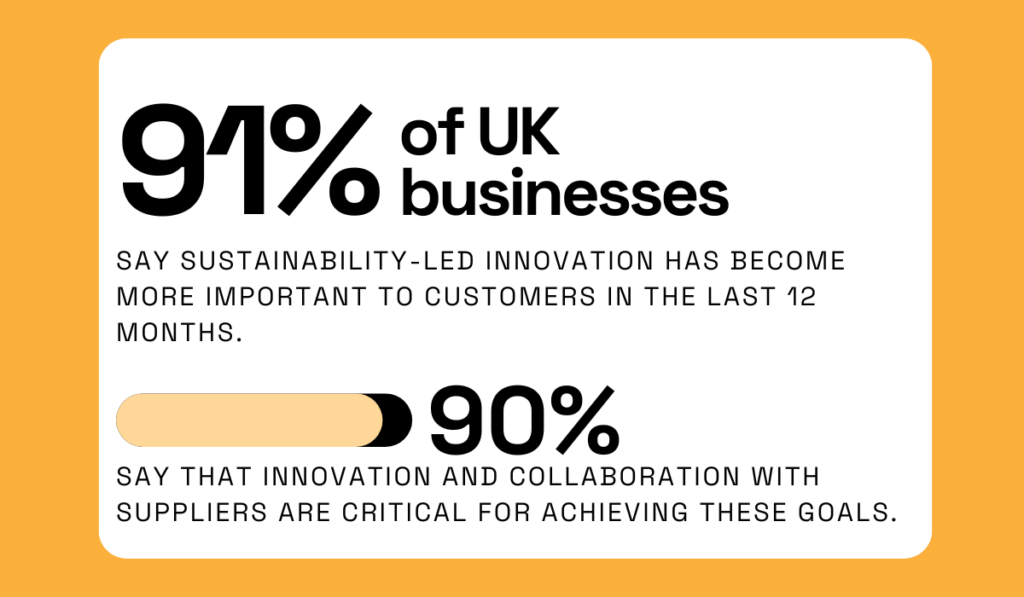
Illustration: Veridion / Data: Ivalua
Collaboration with suppliers is key to achieving these ambitious sustainability goals.
By working closely with suppliers who share your commitment to environmental and social responsibility, you can collectively drive positive change throughout the supply chain.
To better understand the main principles of this trend, take a look at the image below.
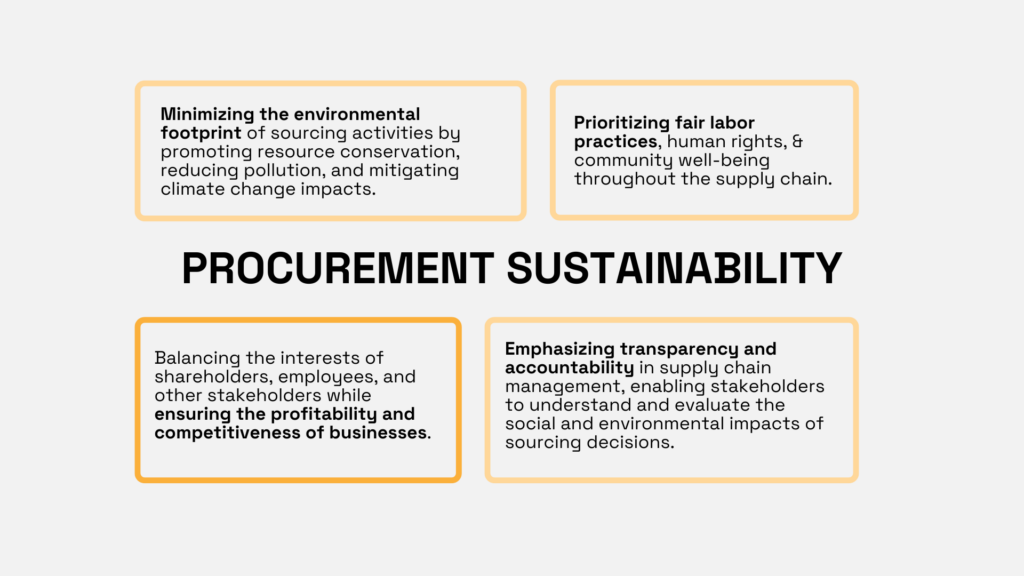
Source: Veridion
As you can see, sustainability concerns both environmental safety and fair labor practices.
This means reducing carbon footprints and waste, but also ensuring that workers are treated fairly and ethically.
Achieving this requires a focus on transparency to keep all parties accountable.
Finally, while focusing on sustainability, businesses must also remain profitable.
Balancing environmental and social responsibilities with financial performance is crucial for sustainable growth.
In the end, a strategic approach to sustainable procurement should be a win for all: benefitting the planet, the people in your supply chain, and your organization’s bottom line.
Procurement needs to be a stable practice, and this is where risk management comes in.
In the coming years, a focus on robust risk management strategies will be key to ensuring the stability and resilience of procurement operations.
The current landscape is rife with risks, including supplier and supply chain issues, geopolitical risks, price volatility, and more.
In fact, according to a paper by the European Confederation of Institutes of Internal Auditing (ECIIA), we are experiencing a poly-crisis of risk.
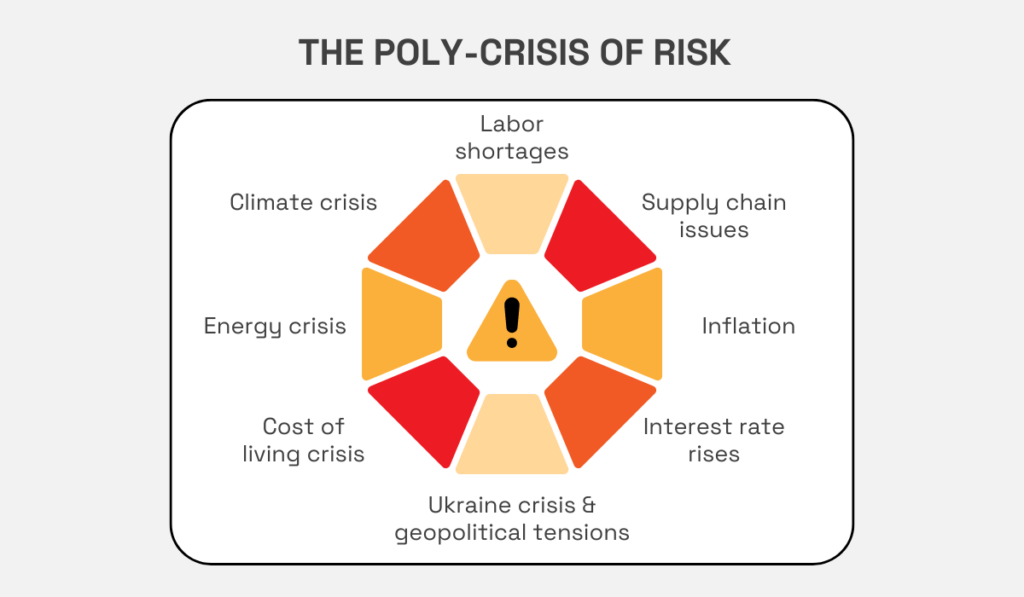
Illustration: Veridion / Data: ECIIA
With environmental and energy crises, such as climate change and resource depletion, rising inflation and interest rates, and geopolitical tensions and conflicts, proper tools and practices need to be used to mitigate these issues.
For a proper risk mitigation strategy, the right steps need to be taken in your organization.
You can see these steps outlined in the illustration below.
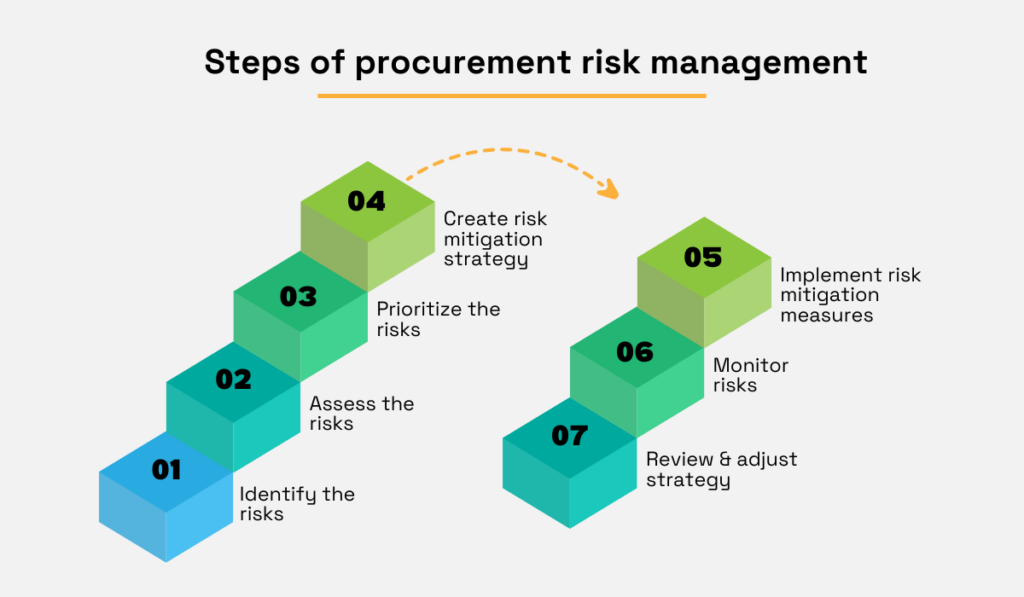
Source: Veridion
Each organization and its procurement function is differently vulnerable to risks depending on their specific circumstances and industry.
Therefore, there are no universal trends when it comes to risk management methods and strategies.
However, they can include the following:
Some of these strategies are discussed throughout this article, highlighting the interconnected nature of effective procurement practices and risk management.
Ultimately, developing robust risk management strategies is crucial for the stability and resilience of procurement functions in the coming period.
The ever-changing landscape of risks and the dynamic nature of today’s markets demand a more flexible and adaptable approach to procurement.
This is why we’re seeing a growing focus on agile procurement practices.
In essence, agile procurement is a methodology that prioritizes flexibility, empowering teams to respond quickly to changes and continuously refine their strategies.
To better understand the contrast between agile and traditional procurement, consider the table below.
| ASPECT | AGILE PROCUREMENT | TRADITIONAL PROCUREMENT |
|---|---|---|
| Flexibility | Highly flexible, adaptable to changes in requirements | Rigid, follows a fixed plan with less room for changes |
| Speed | Fast iterations, enabling quicker adjustments and deliveries | Longer lead times due to detailed upfront planning |
| Collaboration | High collaboration with suppliers and stakeholders | Limited collaboration, more transactional |
| Risk Management | Continuous risk assessment and mitigation | Risk management mostly done at the beginning of the project |
| Decision-Making | Decentralized, empowering teams to make decisions quickly | Centralized, with decisions made by a few key individuals |
Simply put, agile is a nimble approach.
It’s characterized by flexibility, rapid decision-making, continuous risk management, and the inclusion of diverse stakeholders in decision-making.
However, it can be less predictable and requires a high degree of trust and collaboration.
On the other hand, traditional procurement is more structured and plan-driven.
It offers greater control and predictability, but can be less adaptable to unexpected events.
The question is: is agile procurement the right fit for your team?
Can it enhance your efficiency and optimize your practices?
As data from a recent survey illustrates, many organizations are adopting agile for benefits like faster time-to-market, improved delivery predictability, and reduced risk exposure.
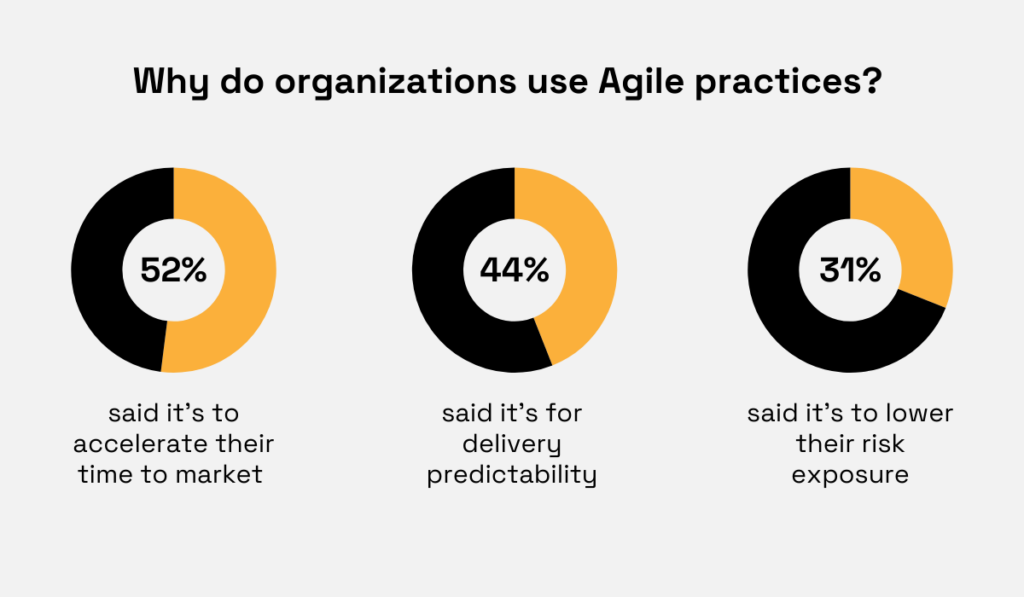
Illustration: Veridion / Data: State of Agile
If, like many other organizations, you value these benefits and are willing to embrace the collaborative and adaptable nature of agile procurement, it might be the perfect approach to elevate your procurement function.
Finally, let’s discuss the growing trend of focusing on supplier relationships.
Organizations are increasingly moving toward enhancing their supplier relationship management practices to foster collaboration, drive innovation, and mitigate risks.
This shift is driven by the recognition that strong supplier relationships can significantly impact business success and sustainability.
Take the 2024 case study of North West London Procurement Services (NWLPS), showcased below, and its heavy focus on supplier relationship management.

Source: World Commerce and Contracting
NWLPS’s focus was on four key aspects:
Supplier-oriented initiatives like NWLPS’s “Stronger Together” strategy will continue to increase, especially when considering the benefits of enhanced collaboration, reduced risks, and improved innovation.
Data supports this trend, as a McKinsey study found that supplier-focused organizations outperform their peers.
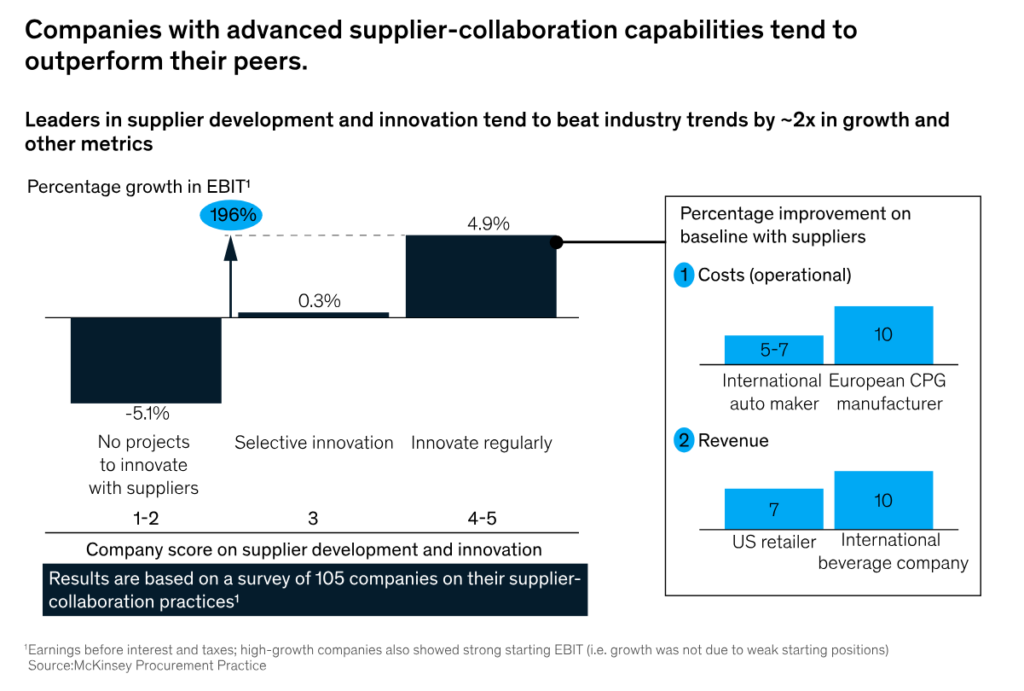
Source: McKinsey
With strong numbers like 2x growth due to supplier development and innovation, it’s clear that investing in supplier relationships pays off.
The development of stronger supplier relationships is a key trend that will continue to shape the future of procurement.
So, by prioritizing supplier collaboration and performance, organizations can achieve greater success and sustainability.
We’ve taken a deep dive into the eight most impactful trends transforming the procurement landscape.
From artificial intelligence and automation to the growing emphasis on sustainability and supplier relationships, these trends offer both challenges and opportunities for procurement professionals.
We hope this article has given you a clearer vision of the future, but also the tools you need to navigate it successfully.
By embracing these trends, you can position your procurement team at the forefront of innovation, drive greater value for your organization, and build a more resilient and sustainable supply chain.
The future of procurement is here—seize the opportunity to shape it!